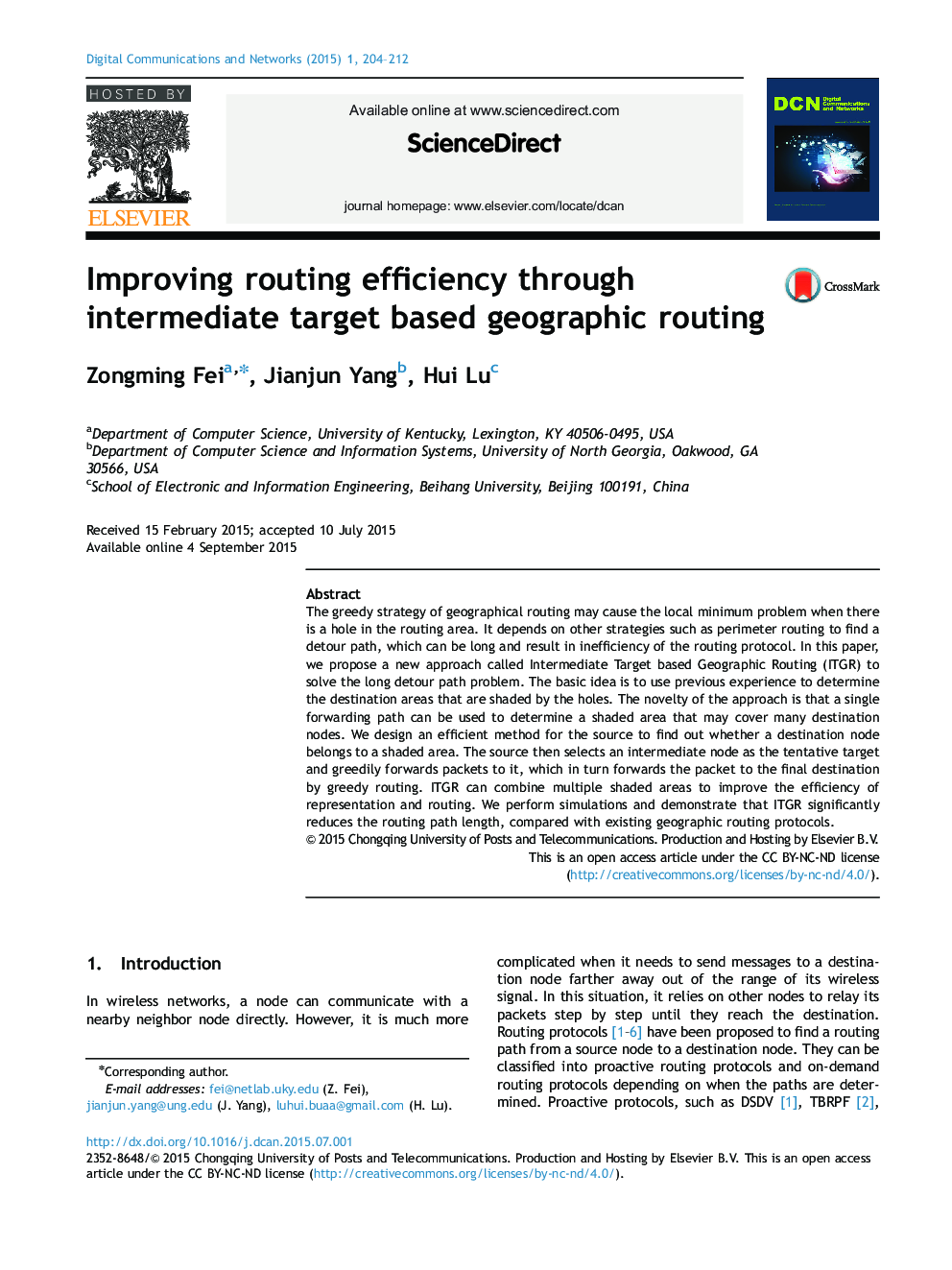| Article ID | Journal | Published Year | Pages | File Type |
|---|---|---|---|---|
| 704142 | Digital Communications and Networks | 2015 | 9 Pages |
The greedy strategy of geographical routing may cause the local minimum problem when there is a hole in the routing area. It depends on other strategies such as perimeter routing to find a detour path, which can be long and result in inefficiency of the routing protocol. In this paper, we propose a new approach called Intermediate Target based Geographic Routing (ITGR) to solve the long detour path problem. The basic idea is to use previous experience to determine the destination areas that are shaded by the holes. The novelty of the approach is that a single forwarding path can be used to determine a shaded area that may cover many destination nodes. We design an efficient method for the source to find out whether a destination node belongs to a shaded area. The source then selects an intermediate node as the tentative target and greedily forwards packets to it, which in turn forwards the packet to the final destination by greedy routing. ITGR can combine multiple shaded areas to improve the efficiency of representation and routing. We perform simulations and demonstrate that ITGR significantly reduces the routing path length, compared with existing geographic routing protocols.
